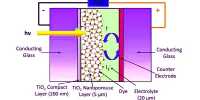A group of physicists filled their lab with courage in the name of science and can finally uncover why the “alcoholic” habit comes down from the glass “on legs” after roaring. The study, published in the journal Physical Review Fluids, found that the effect absorbed by wine binders was to block the hollow of the liquid stuck to the glass as a result of shockwaves, causing it to break and run in line. If you’ve ever been in a restaurant desperately trying to figure out if you know a thing or two about alcohol, try gently turning your glass around and watching how the liquid comes out of the glass.
In a good wine, “legs” or “tears” will appear as a straight line of fluid traveling over the glass. It is thought by some that the presence or absence of foot is indicative of the alcohol level and quality of wine, but it is actually a bit more complicated than that. When you turn around a glass of wine; a thin film of liquid stays on the glass wall. This is because the alcohol evaporates much faster than the alcohol and the change in surface tension causes the drink to move upwards as you turn. After adequate rotation, a ring of wine would remain more intact but it was not known why it would flow back to the front (legs).
Hangjie Ji and his colleagues at the University of California, Los Angeles, have finally decided to find out why this happened. The UCLA team performed a theoretical analysis that took into account the already established gravitational effects from previous studies, which explained why the alcohol film is so easily mounted on the glass. They established that the ward’s upward flow of wine is characterized by an ascending wave that begins as a uniform continuum but once the vortex stops, the thickness suddenly descends slowly backwards. This fragmented drop inside the glass is caused by a shock wave that obstructs the ring of liquid stuck to the glass.
The wave they observed is called an under-compressive shock, a shaky kind of shock wave that collects one drop and eventually breaks like glass. Their model suggests that the difference between the fluid flows on the side of the glass – due to the difference in surface tension mentioned earlier – and the downward force of gravity combine to form a shock wave. They tried roaming wine glasses in their lab and observed that the shock wave could be imagined as a ridge at the rear end. The same effect can also explain why air-affected liquid films are driven in the same way as seen on aircraft wings or car windows. Anyone who has ever pretended to be in a music video on a rainy day looking directly at the passenger seat window will be familiar with the results.
Anette Hosoi, from the Massachusetts Institute of Technology, said in a statement to New Scientist, “Wine tears have been studied for over a century and it is noteworthy that they have been linked to brief stress instability for the first time.”This study is a beautiful example of this kind of push in a familiar environment.”So, with your knowledge of the turbulent shock waves, you can go ahead with confidence in the knowledge that you can spark your pointless date and turn your wine. We’re sure you’ll see these again.















